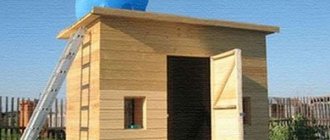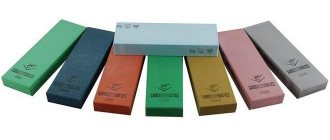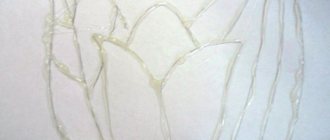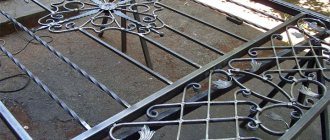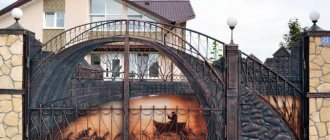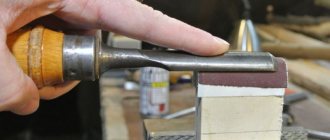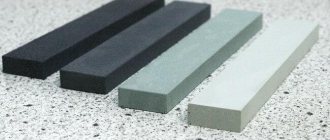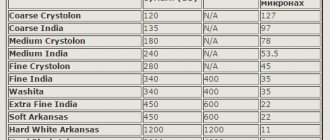Author of the article: Sudakov A.P.
Liquid stone is used in modern construction. In terms of its characteristics, it is not inferior to natural stone, and in some parameters of properties it even surpasses it.
An unusual material, distinguished by its practicality and beauty, has won the trust of consumers, since with its help it is possible to effectively decorate buildings, structures and their facades, providing them with surface protection and giving them a modern, respectable appearance. It is also used for interior decoration, to create durable furniture coverings, as well as for countertops and sinks. Since the material is popular and in demand, having organized a business for its production, the project manager will not be left without clients.
Appearance of liquid stone
What is liquid stone
Liquid stone is a building mixture of a special composition that, when combined with water, hardens and forms a surface that looks like real stone.
The difference can be felt when holding the material in your hands as it is warmer and smoother. After the product has completely hardened, it must be sanded to achieve a glossy, matte or mirror finish. The composite material has a dense, non-porous structure, which makes it resistant to dirt absorption and external factors such as temperature changes, high humidity and ultraviolet rays.
Flexible stone decor
Soft stone finishing is not the only way to use the material. Designers have long come up with several ways to use products to diversify interior decorations.
With the help of plastic slabs you can give new life to flower beds and decorative elements of landscape design. It is enough to simply paste over the products with a material of a suitable texture.
The most popular decor using soft stone is lampshades and shades for lamps. The finishing material perfectly transmits light and creates a warm, diffused flow of rays. “Stone” lamps look amazing in classic interiors, modern, loft, and eco styles.
You can decorate niches in the walls with decorative stone. Against such a background, paintings on natural canvases, figurines, porcelain figurines, and pots with plants will “bloom.”
Lamp with flexible stone design
Flexible stone sauna counter design
Specifications
Nuances of technology
Artificial stone is a hardened and processed composite liquid mass of unsaturated polyester resins with a specific filler. It hardens after adding an accelerator and hardener to the prepared base solution. The liquid mixture is a semi-finished product for any products that are manufactured by spraying or casting.
Cons of agglomerated stone
Agglomerate is an artificial stone made more than 90% from crushed chips of natural stone (most often granite, quartz or marble). Quartz sand, mirror or glass particles and special organic pigments-dyes are also added to it.
Polyester resin acts as a unifying base. It is this combination of components that gives the agglomerates their exceptional strength.
Countertops made of agglomerated stone look expensive and impressive, and are much more affordable than natural stone. But agglomerate is a dense and heavy material: labor-intensive to process and difficult to install.
Some customers complain that agglomerated composite feels cooler to the touch than acrylic-based stone. However, this opinion is subjective - natural stone will seem even colder to the touch.
Agglomerate is a dense and durable stone. Unlike acrylic, it cannot be scratched by cutlery.
Some manufacturers claim that on such a countertop you can cut food without a cutting board. Theoretically, hot dishes can be placed on agglomerated marble, quartz and granite: if the material is of high quality, there should be no marks left.
But despite this, he is still afraid of abrasive detergents. Because of them, micro-scratches may also appear on the polished surface.
Over time, they can deprive the work surface of its beautiful shine. Polishing agglomerated stone is a rather complex process that requires special equipment and preparation.
However, it is possible to restore its beautiful shine.
When placing an order for a countertop, table or bar counter, carefully read the clauses in the contract about the conditions of use of the material. Knowing what weak points your specific countertop may have can help you keep it looking good longer and avoid potential manufacturer warranty issues.
Immediately after installing the stone countertop, experts advise rubbing the surface with a special protective agent. Its task is to enhance the water- and grease-repellent properties of the stone. For regular maintenance, it is recommended to use neutral detergents without abrasive particles, alcohol or acids. It is also advisable to avoid hard brushes.
Features of the material, advantages and disadvantages
All items made from composite material are durable and strong. They are valued for their spectacular appearance and rich decorative possibilities, since they are made in a varied palette and texture. The uniqueness of the material lies in the ability to create monolithic surfaces without seams or joints. The surface of the treated product is shock-resistant, moisture-resistant and hygienic. Caring for it is simple and involves cleaning with soapy water. Cracks and unevenness of the material that have arisen during the operation of the product can be easily eliminated, and the repair site will not be visible.
However, along with many advantages, liquid stone also has disadvantages that may cause a person to refuse to purchase a product made from it. The high cost forces middle-income consumers to pay attention to products made from more affordable materials, such as ceramic tiles, laminated chipboard, MDF, porcelain stoneware, stainless steel or even solid wood. Only granite, marble or natural quartz can cost more.
Another disadvantage of the composite material is the small thickness of the coating, which usually does not exceed four millimeters. Low parameters of moisture resistance and adhesion increase the likelihood of liquid stone peeling off from the base on which it was applied. However, manufacturers provide a guarantee for their products, which is valid provided that the operating requirements are met. If a business entity, in the process of fulfilling an order, complies with the norms and requirements for the technological process, then the result of its work will delight the customer for a long time with its spectacular and respectable appearance.
Sample of a liquid stone product
It is worth considering that artificial composite material is more durable than natural one. Its radioactivity parameter is normal, whereas for many natural materials, such as granite, for example, it is significantly exceeded.
Advantages of artificial stone
Products made from artificial stone have many advantages:
- Price. The cost of artificial stone is much lower than natural stone
- Large scope of application. Artificial granite or marble can replace natural varieties of stone in any field of human activity.
- Appearance. Artificial stone can have any color and different texture.
- Easy to use. Artificial stone is easy to process and is not difficult to install.
- Service life: this material can last about 30 years in an aggressive environment.
- Resistant to damage. The material is not scratched and does not support corrosion processes.
- Similarity to natural material. It is impossible to distinguish factory granite from the real thing by eye.
There is a simple test that allows you to determine whether the stone is natural or manufactured at a factory. You need to take a metal object (for example, a coin) and knock on the surface of the stone. Natural rocks will sound loud, while artificial ones will sound muffled.
Production technology
The technology for manufacturing liquid stone is not characterized by complex operations. All the necessary elements are introduced into the dry construction mixture to ensure the specific qualities of the finished product. After adding water to the container, ensure thorough mixing of the composition until a uniform plastic consistency is formed. The resulting mixture is applied to the surface of the product or poured into molds. Drying is carried out under natural conditions.
To increase production volumes when there is insufficient area for work, forced drying is possible using equipment that provides a hot air flow. To give a respectable appearance and adjust the texture, the hardened material must be sanded or polished.
How is artificial stone made?
Artificial stone - this name combines a number of different materials that are made using a certain technology, and the end result almost completely imitates natural stone.
The first successful developments in this area were carried out in America in the 60s of the last century. Today, there are a number of technologies for obtaining this material. What is it for? First of all, it is widely used for interior decoration , creating a unique interior. Certain types of artificial stone are used for landscape design and finishing of building facades.
The production of artificial stone is possible not only in production conditions using complex equipment, but also several of the simplest varieties can be obtained at home.
Work location
Mixing the solution
Work can be carried out at our own production site or at the client’s site. When adding field services to the price list, you should consider the need to purchase or rent a cargo vehicle to deliver the raw materials of the product, as well as some elements of the finished product.
On your own premises you can manufacture products that can be easily transported to the customer: countertops, sinks, sinks and decorative elements. On-site services are provided to clients when ordering finishing of floors, facades or buildings.
Interior finishing with flexible stone
There are several options for such decor for walls: brick-like finishing, a full-fledged replacement for wallpaper, highlighting accent areas. Film with a stone coating is useful for decorating a fireplace, columns, and protruding elements.
The decor is suitable for any room: living room, bathroom, office, hallway. However, you should not be zealous and simultaneously decorate the ceiling, floor and walls with soft decorative stone. It is better to choose one area for finishing. In this case, the design will look organic and unobtrusive.
Interior finishing with flexible stone
Equipment
The technology for producing liquid stone requires the presence of specific equipment in the form of containers and molds for the material. For grinding, grinding machines are used to process the finished product. A set of equipment for opening a production line will cost an entrepreneur no more than 200,000 rubles. It includes:
- containers of various shapes and sizes;
- grinding machines;
- drill-mixers with attachments for quickly carrying out the mixing procedure;
- screwdriver;
- spray;
- electric jigsaws;
- Circular Saw;
- small construction tools;
- sandpaper;
- grinding wheels of different hardness.
To reduce the cost of delivering products to customers, it is recommended to take care of purchasing vehicles with the appropriate carrying capacity and dimensions. As an alternative, it is possible to sign a vehicle rental agreement.
Window sill with sprayed surface
A composite composition of liquid stone is poured into a pre-made mold, the workpiece is placed on it and evenly pressed down with a load. The workpiece is perforated in several places so that excess solution can escape.
After the bottom layer has completely hardened, the load is removed from the workpiece, and another, final layer of solution is poured on top. Leave the workpiece until completely hardened, then remove the finished product from the mold. For final processing, the product is milled, ground and polished.
It seems that if you follow all the instructions, making liquid stone yourself is not at all difficult. But there is no need to rush to conclusions. The problem is that there is no optimal composition for this composite material. Manufacturers modify the composition of the mixture, and the technological process changes accordingly.
Useful tips for working with liquid stone
Usually, the production of artificial stone is considered as an opportunity to organize your own business. There is no need to rush in this case. It is better to postpone the purchase of materials and equipment until several technologies have been studied, the sales market has been analyzed, and possible failures have been eliminated.
Room
To organize a business for the production of liquid stone, large production areas and a powerful electric line are not required.
To start production, a room of 30 m2, equipped with standard 220V electrical wiring, is sufficient. Access to cold water and sewerage is required. From a fire safety point of view, there are no special requirements for the production line.
Grinding
The specifics of production necessitate dividing the room into two compartments. In one of them the process of producing the solution and applying it to the product will be implemented, and the other compartment is necessary for grinding. To prevent dust generated during the processing of the product from getting into the solution and onto the products during the drying process, both rooms must be isolated from each other.
Methods for making liquid granite
Liquid granite can be made using one of two technologies. The first involves the use of casting methods, while the second involves the spraying method. When casting, the finished mixture is poured into molds and left until completely dry, and then the products are removed, and at the next stage they are processed.
Liquid granite can also be made using the spraying method. In this case, the technology of spraying liquid stone onto the surface is used; the layer thickness does not exceed a few millimeters. In turn, the pollination method is divided into two more types:
- direct spraying;
- reverse spraying.
Raw materials
Liquid artificial stone consists of a polymer resin.
To give it the properties inherent in its characteristics regulated by regulatory sources, additional components are used, such as plasticine, gelcoat, hot melt adhesive, calcite, acetone, fiberglass, fillers and pastes to impart color.
A mandatory element for imparting hardness is a hardener added at the last stage of the production process. For all products in the manufacture of which liquid stone is used, identical raw materials are used. The difference lies in the color design and content of the product.
Quartz (agglomerate)
For a complete picture, you should also describe the pros and cons of working surfaces made of quartz agglomerate. Let’s say right away that in terms of performance characteristics, artificial stone made from quartz chips, in our opinion, is head and shoulders above acrylic.
First of all, this is due to the composition of the agglomerate, but let's take it in order.
- very strong and durable material;
- no pores, impenetrable to microorganisms, absolute hygiene;
- excellent resistance to mechanical stress, acids and dyes;
- short-term resistance to high temperatures;
- quite a wide range of colors;
- very easy to clean;
- does not require special care or maintenance;
- can be glossy, matte and even textured;
- harmless to humans and the environment.
- high price;
- production time;
- complex and expensive installation;
- conditional heat resistance;
- visibility of seams, as it is made in plates (slabs);
- can only be used for simple geometric shapes.
What real people say about these countertops:
Conclusion: if your budget allows you and you want an almost eternal countertop of a simple shape, but one that perfectly imitates natural stone and with high performance characteristics, order a countertop made of agglomerate.
Costs and payback
A business idea for the production of liquid stone, due to the low costs of creating production, is the best solution for beginning entrepreneurs. You will have to spend up to 200,000 rubles on a set of equipment. Renting the premises will cost 100,000 rubles. To start production, you need to purchase raw materials for 200,000 rubles. You should plan up to 30,000 rubles for advertising, and up to 20,000 rubles for general business expenses.
The most expensive expense item is the purchase of a vehicle, but at the initial stage you can rent it. The cost of services depends on the vehicle’s carrying capacity and can range from 45,000-75,000 rubles per month. Having calculated all the expenses, we can conclude that to open your own business in the field of production of composite materials you need to have up to 800,000 rubles.
When calculating the profitability of an entrepreneurial idea, it should be taken into account that a square meter of a product costs from 7,000 to 11,000 rubles. To make it, you need to purchase raw materials in the form of the base of the product for 3,000 rubles and special additives for 200 rubles. The payback of the project with such expenses is six months, while the average monthly revenue will correspond to 350,000 rubles.
Raw materials used
Since the business profitability parameter is high, it can be expanded without the need for additional investment in the project. Such a solution will be necessary when demand exceeds production capacity.
How much income can a business generate and over what period of time?
In order to answer this question more or less accurately, you need to have an idea of such a parameter as the demand for a given product or market capacity.
To do this, you can use market analysis data for finishing works.
If you look at the general dynamics for the request “apartment decoration” in the Yandex search engine, then from the presented graph you can see that there was increased interest in this request in October 2021 and January 2018. In general, the picture over the past two years clearly shows that a steady increase in interest in designer renovations.
Even more interesting data are indicators of demand for certain types of repair and finishing work.
As can be seen from the graph, services for equipping bathrooms and kitchens are approximately at the level of 20 -25% of the total demand for apartment renovation services.
It can be roughly estimated that the production of liquid stone as a finishing material in the local construction market is capable of “winning” a share of no more than 20% of the total total demand.
Is it a lot or a little?
Let's do the calculation. In a city with a population of 100 thousand inhabitants there will be approximately 30 thousand apartments (a family of 3 people). If we take into account that minor apartment repairs are carried out every year, then the total annual market volume for minor repairs will be 30 thousand apartments. Of this volume, finishing accounts for approximately 20% or 6 thousand apartments. Let's say that 50% of apartment owners carry out repairs themselves or do them less than once every 1 year. Thus, the minimum volume of the finishing work market is 3 thousand apartments per year.
The average amount of work for laying liquid stone varies greatly depending on the customer’s wishes. If we assume that kitchens and bathrooms are equipped with this material, then the average coverage area will be 10 square meters. m. for one apartment.
As a result, we find that the annual market capacity for a small city can be approximately 30,000 square meters. m. At the average price of liquid stone per sq. meter 7000 rub. The market capacity in monetary terms will be more than 210 million rubles. The figure is impressive. Of course, not all of this volume of finishing work will necessarily have to be finished with liquid stone. But even if you count on only a quarter of the market, then in this case the minimum market volume will be more than 40 million rubles. in year.
To this figure we can also add orders that may come from the commercial sector. For example, owners of restaurants, clubs, bars and cafes pay a lot of attention to modern interiors. In many ways, the demand for finishing with innovative materials such as liquid stone is determined by local specifics, including the solvency of the population.
Based on practice, we can say that a small individual business that uses liquid stone is profitable. The price varies from 7 to 11 thousand rubles. for 1 sq. m. This gives an income of about 100 thousand rubles. per month. All investments (at least 300 thousand rubles) pay off in one construction season or at least 2-4 months.
Marketing Tips
When planning to open your own business, it is recommended to choose a specialized area of activity, depending on which the sales system will be built.
When performing work at clients' homes related to the finishing of a room or building, you should consider the option of completing the order on their premises. This solution will be facilitated by small-sized equipment that is not difficult to place at the construction site.
When manufacturing products to order and performing work on the territory of a business entity, the contractor will need to go to the site to take measurements and receive an advance payment. The order is completed within a week.
To attract customers, you should use the option of promotions and discounts applied to the customer’s cost item for transporting finished products from the production workshop to the installation site. To do this, you should first highlight the delivery of the product as an additional service, and then present it as a bonus, offering the customer to receive the service at a reduced price or for free. Price parameters, as well as the level of applied discounts, should be formed taking into account the level of competition in the region.
To search for orders, you should establish relationships with construction companies, manufacturers and distributors of furniture and plumbing fixtures. Cooperation with interior designers will provide the entrepreneur with constant work based on recommendations.
